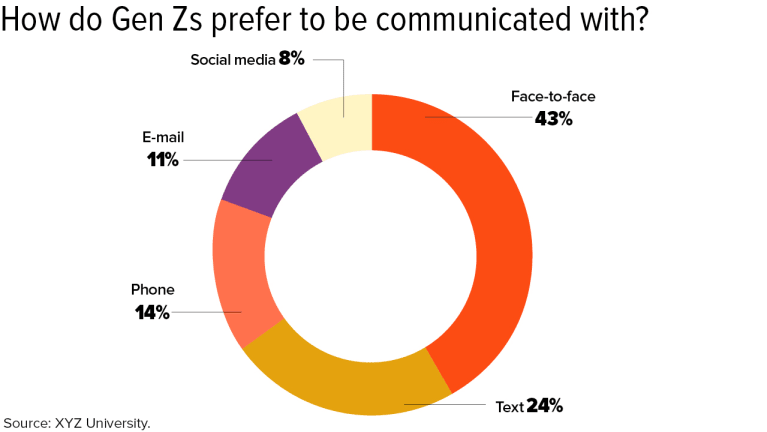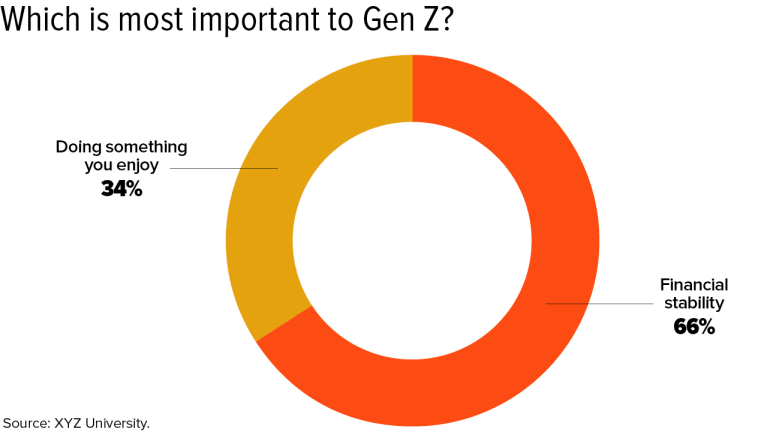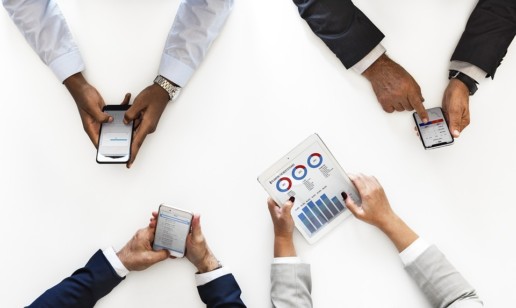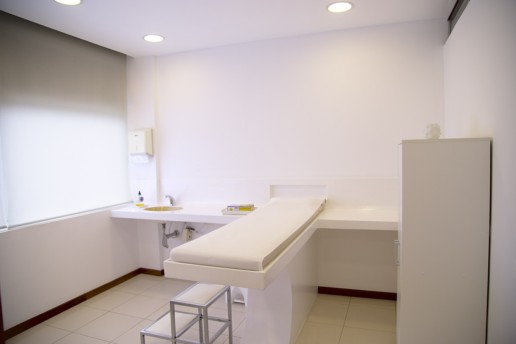What Your Youngest Employees Need Most Right Now
During the trying times that the coronavirus has placed upon the workforce, it seems to be creating a bigger unknown difficulty in younger employees. Read this blog post to learn more.
The long-term toll of the coronavirus is unknown, but its effects on our health care system and the economy have already been catastrophic. And while the immediate concerns of skyrocketing unemployment and a stalled economy must be addressed today, employers also need to begin considering how to rebuild for the employees returning to the workforce — or entering it for the first time.
This includes Gen Z, the youngest members of the workforce and those currently in secondary school or college. Many who were just beginning their career journey have been furloughed or fired. Those in school were suddenly confined to their homes. Collectively, they are experiencing the greatest national trauma since the Great Depression and World War II.
Ultimately, for the workforce to be equipped to move forward and thrive, employers will need to address the fallout resulting from Covid-19 on their youngest — and future — employees.
How Events Shape Generations
As the Pew Research Center notes, looking at world events and other formative experiences through a generational lens helps provide an understanding of how people’s views of the world are shaped. Young people who grew up during the Great Depression and defended and supported the nation in World War II were coined “The Greatest Generation.” Once past the traumas of these extraordinarily difficult years, this generation shared characteristics that included a patriotism manifested by reverence for American ideals, a belief in the wisdom of government, and a frugality born of severe want.
For Millennials, the horror of 9/11 and the global economic crisis that began in 2007 were calamitous events that were life-altering for their generation. As many were sitting in classrooms, word of airplanes crashing into buildings spread through their school; frightened teachers, family members, and friends were unable to offer their usual reassurance that everything would be okay. The chaos that followed became the touchstone for a future where potential terrorist attacks were an ever-present theme in the way Millennials interacted with the world around them.
As they later began to make their way into the workplace, the economy collapsed. Job offers were rescinded, full-time opportunities became part-time without benefits, and many new hires were the first fired. A generation with an undeserved reputation for disloyalty had to change jobs frequently simply to keep up with basic bills and crushing student debt. Together, these experiences contributed to a profile of a generation more likely to seek order in their world and meaning in their work.
Today, even as the coronavirus has been merciless in its impact on people of all ages, the long-term effects on the Gen Z cohort of adolescents are likely to be particularly severe.
For the rest of their lives, the time the world stopped will be seared in Gen Z’s collective memory, a generation-defining moment that instilled deep fears about their uncertain future. Overnight, they lost their daily interactions with the teachers who trained them, coaches who mentored them, clubs that fulfilled them, and friends who sustained them through the painful ordeals of youth. Milestones such as proms, plays, athletics, and the ritual of graduation can be crucial to social and emotional development, each experience serving as a rite of passage to the next stage of life. These lifecycle markers of adolescence that were nervously anticipated and excitedly shared swiftly vanished.
How Companies Can Support Gen Z Employees
It will be years before sufficient data exist to quantify the full impacts of this experience on Gen Z. Existing research, however, can help employers learn what they should expect and how they can best manage their Gen Z employees, today and in the future.
Research in three areas offers a good start for this analysis: skill development, stress management, and building emotional intelligence.
Skill development. Gen Z’s learning has been disrupted in a way that schools were unequipped to manage. Some converted course work to online formats, often implemented by teachers and professors untrained for such a platform. Others minimized direct instruction, urging students or (depending on the grade level) parents to turn to independent projects and digital resources.
In most instances, learning has been attempted in the presence of entire families similarly house-bound and juggling multiple responsibilities — environments that are not conducive to instruction without any preparation. Grades have been converted to pass/fail, tests have been abandoned, and deadlines extended.
These options may be right for the moment, but likely will have costs. Research shows that Gen Zers already experience a difficult cultural transition between college and the professional world that can leave them feeling disoriented and confused. Now that their structured learning has been upended, employers and employees may need to develop greater patience with Gen Z’s adjustment to the professional world and a greater focus on intergenerational mentoring and support.
Employers should consider thoughtfully designed programs to ease Gen Z’s transition by, for example, rethinking orientation programs, early assignments, and mentoring focusing on the development of expertise. For example, orientation programs generally consist of a short-term introduction to manuals, computer systems, and other basics of the workplace. A more comprehensive approach could extend orientation throughout the first-year work experience, offer rotations throughout the organization, and include programs to help new hires integrate into the culture of the workplace. Programming can also address substantive job requirements, offer strategic career support, and provide training on the organization’s goals and objectives, allowing employees to appreciate where they fit and why they matter.
Mentoring, too, can be a powerful way to leverage generational diversity. Research demonstrates that, properly coached, new professionals will develop faster because their learning has been enhanced and guided. To maximize the opportunity for a successful mentorship program, employers should ensure managers understand the benefits of strengthened intergenerational relationships, dispel negative perceptions that could weaken engagement, and provide the needed time and resources. One way to accomplish such buy-in is by including reverse mentoring programs where young employees help senior workers improve their skills in technology and social media. For members of Gen Z, such mutually-supportive relationships can enhance their expertise and ease their transition into the workplace, offering employers the added bonus of a stronger multigenerational culture.
Of course, the most significant and potentially enduring adjustment that workplaces had to make during this pandemic has been the implementation of remote working arrangements. The sudden shift was forced on employers by a crisis, but workplace experts have long advocated for greater flexibility based on changing gender and age demographics, globalized businesses, and technology improvements. As businesses begin to rethink how they open their doors, they should also consider building new transition and learning opportunities into the culture of flexibility that younger workers are seeking.
Stress management. For more than a decade, researchers have noted an alarming trend: Gen Z reports higher levels of anxiety and depression than other generations. Studies also tell us that childhood exposure to significant stress can impact brain development and affect mental and social development. If Gen Z’s baseline already shows high levels of stress, what will the impacts of this pandemic be when it comes to their work and careers?
Most companies are aware that unaddressed employee stress and anxiety can also result in absenteeism, turnover, and lowered productivity. Recent data estimate that the annual cost of job stress to U.S. businesses exceeds $300 billion. But too few firms have developed effective programs to help their employees with mental health struggles. In fact, studies shown that an effective stress management policy operates at the employee, workplace, and organizational levels. In particular, organizational approaches lead to more sustainable results than interventions solely directed to individuals.
Further, because Gen Zers are starting their careers with higher levels of anxiety exacerbated by the coronavirus pandemic, employers can adapt existing research and best practices to create customized programs for young workers. This could include early-career affinity groups that encourage open conversation in a supportive environment. In addition, coaching interventions can boost an individual’s confidence in their ability to succeed and reduce anxiety, helping to keep minor performance challenges from becoming career-damaging incidents.
Emotional intelligence. Research demonstrates that emotional intelligence, consisting of self-awareness, self-regulation, motivation, empathy, and social skills, is a critical element of effective leadership — and can be taught and learned. Employees who develop emotional intelligence can provide a foundation for a respectful work environment and a talent pool of future managers. This area of research offers both challenges and opportunities for Gen Z employers.
In having to cope with a shut-down of life as they knew it at such a young age, many Gen Zers have experienced a massive interruption in their ability to discover what motivates and fulfills them. Because of this, they’ll need more time in their young adult years to undertake this self-exploration. Employers can help fill this gap by offering programming that helps build emotional intelligence from the outset of their careers — not several years down the road. One note: I would recommend eliminating the phrase “soft skills,” a term that actually denigrates the importance of training and development in these important areas.
Employers are likely to benefit from the likelihood that Gen Z enters the workplace with a greater level of empathy and adaptability, qualities that are critical components of emotional intelligence. Having experienced both the significant disruption to their own lives and the pain and sorrow felt by friends and loved ones who suffered during the pandemic, Gen Zers are likely to be vigilant to the emotions of others at work.
Companies have the opportunity to help members of Gen Z become the Next Great Generation of leaders. Having been tested at a very young age, they will bring a special blend of resiliency and humanity to the workplace. Employers can take advantage of these unique formative experiences by providing structured support to their younger employees that will smooth their transition and ensure their place as valued members of the workforce.
SOURCE: Rikleen, L. (03 June 2020) "What Your Youngest Employees Need Most Right Now" (Web Blog Post). Retrieved from https://hbr.org/2020/06/what-your-youngest-employees-need-most-right-now
More than one in six young people stopped working since virus
Did you know: Since the coronavirus pandemic began, there has been more than one in six people that have stopped working. Read this blog post to learn more.
The coronavirus outbreak is hitting the young “harder and faster than any other group,” with a risk of scarring them for their working lives, according to the International Labour Organization.
More than than one in six people have stopped working since the onset of the crisis, highlighting the predicament of a cohort often subject to informal contracts, low pay and disproportionately likely to work in sectors like retail that have been shut down by the outbreak.
“The pandemic is inflicting a triple shock on young people,” the ILO said in a report on Wednesday. “Not only is it destroying their employment, but it is also disrupting education and training, and placing major obstacles in the way of those seeking to enter the labor market or to move between jobs.”
In the U.S. alone, the unemployment rate for young men aged 16–24 surged from 8.5% to 24% between February and April, while for young women it jumped from 7.5% to 29.8%. Similar trends were visible in Canada, China, Australia, and other countries, the ILO said.
Young people entering the labor market during a recession can suffer the fallout for years because they struggle to find a job or have to take one that doesn’t match their educational background.
“Long-lasting wage losses are likely to be experienced by entire cohorts of young people who have the misfortune of graduating from secondary school or university during the 2019/20 academic year,” the report found.
The ILO’s warning stands in contrast to comments made by European Central Bank President Christine Lagarde, who at an on-line event for young people on Wednesday encouraged viewers to embrace change, acquire new skills and be “prepared to do all sorts of jobs.”
SOURCE: Look, C. (28 May 2020) "More than one in six young people stopped working since virus" (Web Blog Post). Retrieved from https://www.employeebenefitadviser.com/articles/more-than-one-in-six-young-people-stopped-working-since-virus
Top Challenges for Managers in 2020
Technology and rising trends are creating new challenges for managers to handle. Different situations regarding employees from Generation Z and gig workers, mental health and vaping are creating new ways for managers to interact with employees. Read this blog post to learn more regarding how managers are facing these trials.
Managers in 2020 will face some new challenges, many having to do with their youngest workers. Among those challenges: leading employees from Generation Z and gig workers, addressing mental health issues and helping vapers kick the habit.
Understanding Generation Z
Generation Z workers—generally, those born in 1995 or later—should be on every manager's radar. "Within the next two or three years, they will become the fastest-growing percent of the workforce," said Jason Dorsey, a Generation Z researcher and co-founder of the Center for Generational Kinetics, a research and solutions company in Austin, Texas.
"They don't remember a time before smartphones or social media," he said. They live on their phones, not their laptops, and that's the way they want to communicate—on and off the job. "Gen Z expects to go through the entire application process on a mobile device."
Dorsey said managers often tell him that they don't remember young adults asking about retirement plans, but today's young workers do. "It's the aftershock of the Great Recession, when they saw their parents struggle," Dorsey said.
And Generation Z considers flexible scheduling to be a given, not a perk, Dorsey said. He advises managers who want to attract and retain young workers to offer not only flexible schedules but also flexibility on a start date and the ability to work remotely.
Finally, employees from Generation Z want to have access to their pay beyond the typical twice-a-month paycheck. Platforms such as Instant Financial, which allows workers to access a portion of their pay after every work shift, are appealing, Dorsey said.
Holding on to Generation Z employees may take some coaxing, said Cheryl Cran, founder of NextMapping, a future-of-work consultancy headquartered in Vancouver, British Columbia, Canada. "They are far more entrepreneurial than any other generation," she said, noting that many are gig workers by choice because they value their freedom. Hence, she said, "managers need to think about how to give them freedom" in a traditional job, whether that means offering remote work, flexible scheduling or another solution.
Understanding Gig-Worker Laws
An estimated 15 million adults in the U.S. have alternative work arrangements, according to the Bureau of Labor Statistics. However, concerns about whether employers should classify these workers as employees has spurred states to propose task forces or legislation, according to the National Conference of State Legislatures. Congress, meanwhile, is assessing H.R. 2474, Protecting the Right to Organize Act of 2019. The aim of these efforts is universal: to stop the exploitation of nonemployee workers.
But that goal can misfire, contend some gig workers who are worried about losing their livelihood. California's AB 5, which took effect Jan. 1 and requires businesses to reclassify many independent contractors as employees, has already triggered controversy, including lawsuits challenging it on constitutional and other grounds and pushback from independent journalists, photographers, interpreters, musicians, truckers and others the law doesn't exempt.
Many of these independent workers tend to be young adults who value the flexibility that comes with freelancing. But that flexibility can make traditional employees at the same company resentful. Inspiring teamwork will be no small task, said Alec Levenson, Ph.D., senior research scientist at the USC Marshall Center for Effective Organizations.
"We are at the tipping point of employers hiring people from all different [work] arrangements," he said. "There is not enough focus on productivity, how to get people to work together as a team."
Destigmatizing Mental Health Issues
Mental health disorders, according to the U.S. Centers for Disease Control and Prevention, are among the most burdensome health concerns in the workplace. Nearly 1 in 5 adults reported having some type of mental illness in 2017; stress symptoms, such as headaches or feeling overwhelmed or anxious, are also common.
Adults from Generation Z report the highest stress levels, according to the American Psychological Association's 2019 Stress in America survey. On a scale of 1 to 10, 10 being the highest level of stress, Generation Z reported an overall stress level of 5.8. Generation X averaged 5.5, Millennials 5.4 and Baby Boomers 4.2.
In a tight labor market, where there is stiff competition for talent, managers who show concern about their workers' mental health will stand out to applicants and existing employees, said LuAnn Heinen, vice president for well-being and productivity for the National Business Group on Health (NBGH), a nonprofit headquartered in Washington, D.C., that represents large employers' perspectives on health policy.
In a 2019 NBGH survey, 43 percent of managers said they had a formal mental health strategy in place, including strategies to address depression, anxiety and stress; opioid and other substance abuse; sleep disorders; and workplace bullying.
The managers said the most important components of those strategies are making employees aware of the importance of mental health; hosting mental health awareness events; and training managers on what mental health is, how to recognize trouble signs and how to refer workers to mental health resources.
Even the best mental health programs won't succeed, however, if people don't feel comfortable accessing them, Heinen pointed out. Managers who need help talking with workers about mental health issues can turn to programs such as MakeItOK.org.
Helping Vapers Quit
As of Jan. 7, 2020, a lung illness tied to vaping nicotine or products containing tetrahydrocannabinol, the chemical in marijuana responsible for the high, had resulted in 2,668 hospitalizations and 60 deaths. Employees who vape—many of them young adults—may need help to end their habit.
Programs to help people quit need to be tailored to the generation of workers you're targeting and that cohort's preferred communication style, Heinen said.
Truth Initiative, a nonprofit in Washington, D.C., devoted to eliminating tobacco use, has fine-tuned its decade-old digital tobacco-cessation platform developed with the Mayo Clinic. "We launched a program specifically to address the needs of vapers," said Amanda Graham, Ph.D., chief of innovations for Truth Initiative. The quit-vaping program uses text messages, preferred by many younger adults, and includes instant message support if users feel they are slipping.
SOURCE: Doheny, K. (06 February 2020) "Top Challenges for Managers in 2020" (Web Blog Post). Retrieved from https://www.shrm.org/ResourcesAndTools/hr-topics/people-managers/Pages/Top-Challenges-for-Managers-in-2020.aspx
A 16-Year-Old Explains 10 Things You Need to Know About Generation Z
What was life like when you were a teenager? The world has been focused on understanding and adapting to Millennials. Now Generation Z is beginning to graduate and enter the workforce. Read this blog post for 10 things the world should know about Gen Z.
Think about what life was like when you were 16. The clothes you wore, the places you shopped. What was most important to you then?
Whenever I speak to an organization eager to learn about Generation Z, I always ask that question. I get responses that include everything from the fleeting fashion trends of the day (bell-bottom jeans, anyone?) to the time-honored tradition of getting a driver’s license.
What I hope to achieve as a 16-year-old in 2018 is probably not all that different from what anyone else wanted when they were my age. It’s the way people go about reaching their goals that evolves over time—and that’s what also forms the basis of most generational clashes.
For the past several years, the world has been focused on understanding and adapting to Millennials, the largest and most-educated generation in history. Born between 1981 and the mid-1990s, this group has inspired important dialogues about generational differences and challenged all industries to evolve to meet their needs. In the workplace, Millennials have helped drive a greater focus on flexibility and collaboration and a rethinking of traditional hierarchies.
Of course, any analysis of generations relies on generalities that can’t possibly describe every person or situation. It’s important to remember that generations exist on a continuum—and that there is a large degree of individual variation within them. The point of this type of research is to identify macro trends among age groups that can help foster workplace harmony. Essentially, it’s a way of attempting to understand people better by getting a sense of their formative life experiences. The generation to which one belongs is among the many factors, such as race, religion and socioeconomic background, that can shape how a person sees the world.
But there’s little doubt that gaps among the U.S. generations have widened dramatically. For example, an 8-year-old boy in the United States who grew up with a tablet will likely have more in common with an 8-year-old in China who used a similar mobile device than he will with his 70-year-old U.S. grandparents.
In thinking about the generations, a key thing to understand is that these groups are typically categorized by events rather than arbitrary dates. Generation Z’s birth years are generally recognized as 1996 to 2009. The start year was chosen so that the cohort would include only those who do not remember the Sept. 11 terrorist attacks. The belief is that if you were born in 1996 or later, you simply cannot process what the world was like before those attacks. For Generation Z, the War on Terror has always been the norm.
Like all other generations, mine has been shaped by the circumstances we were born into, such as terrorism, school shootings and the Great Recession. These dark events have had profound effects on the behavioral traits of the members of Generation Z, but they have also inspired us to change the world.
Earlier this year, XYZ University, a generations research and management consulting firm where I act as the director of Gen Z studies, surveyed more than 1,800 members of Generation Z globally and released a study titled “Ready or Not, Here Comes Z.” The results were fascinating.
We discovered key characteristics about Generation Z and what the arrival of my generation will mean for the future of work. At 57 million strong and representing the most diverse generation in U.S. history, we are just starting to graduate from college and will account for 36 percent of the workforce by 2020.
Needless to say, Generation Z matters. And it is more important than ever for HR professionals to become familiar with the following 10 characteristics so that they know how to engage with my generation.
1. Gen Z Always Knows the Score
Members of this generation will put everything on the line to win. We grew up with sports woven into the fabric of our lives and culture. To us, the NFL truly does own a day of the week. But it’s more than just professional, college or even high school teams that have shaped us; it’s the youth sports that we played or watched throughout our childhoods. This is the generation of elite young teams and the stereotypical baseball mom or dad yelling at the umpire from the bleachers.
Our competitive nature applies to almost everything, from robotics to debates that test mental fortitude. We carry the mindset that we are not necessarily at school just to learn but to get good grades that will secure our place in the best colleges. Generation Z has been thrown into perhaps the most competitive educational environment in history. Right or wrong, we sometimes view someone else’s success as our own failure or their failure as our success.
We are also accustomed to getting immediate feedback. A great example is the online grading portals where we can get frequent updates on our academic performance. In the past, students sometimes had to wait weeks or longer to receive a test grade. Now, we get frustrated if we can’t access our scores within hours of finishing an exam—and sometimes our parents do, too.
2. Gen Z Adopted Gen X’s Skepticism and Individuality
Generations are shaped by the behavioral characteristics of their parents, which is why clumping Millennials and Generation Z together is a mistake. In fact, when it comes to each generation’s behavioral traits, Millennials are most similar to their parents—the Baby Boomers. Both are large, idealistic cohorts with influences that will shape consumer and workplace behavior for decades.
Members of Generation Z, on the other hand, are more akin to their parents from Generation X—a smaller group with a skeptical, individualistic focus—than they are to Millennials. That’s why many generational traits are cyclical. Just because Millennials and members of Generation Z are closer in age does not necessarily mean they share the same belief systems.
3. Gen Z Is Financially Focused
Over the past 15 to 20 years, HR professionals have been hyper-focused on employee engagement and figuring out what makes their workers tick. What drives someone to want to get up in the morning and come to work for your organization?
As it turns out, workplace engagement matters less to Generation Z than it did to previous generations. What’s most important to us is compensation and benefits. We are realists and pragmatists who view work primarily as a way to make a living rather than as the main source of meaning and purpose in our lives.
Obviously, we’d prefer to operate in an enjoyable environment, but financial stability takes precedence. XYZ University discovered that 2 in 3 Generation Zers would rather have a job that offers financial stability than one that they enjoy. That’s the opposite of Millennials, who generally prioritize finding a job that is more fulfilling over one that simply pays the bills.
That financial focus likely stems in part from witnessing the struggles our parents faced. According to a study by the Pew Charitable Trust, “Retirement Security Across Generations: Are Americans Prepared for Their Golden Years?,” members of Generation X lost 45 percent of their wealth during the Great Recession of 2008.
“Gen X is the first generation that’s unlikely to exceed the wealth of the group that came before it,” says Erin Currier, former project manager of Pew’s Economic Mobility Project in Washington, D.C. “They have lower financial net worth than previous groups had at this same age, and they lost nearly half of their wealth in the recession.”
Before Generation Z was decreed the ‘official’ name for my generation, there were a few other candidates, including the ‘Selfie Generation’ and ‘iGen.’
Employers will also need to recognize that members of Generation Z crave structure, goals, challenges and a way to measure their progress. After all, the perceived road to success has been mapped out for us our entire lives.
At the same time, it’s important to be aware of the potential for burnout among young overachievers—and to incorporate fun and breaks into the work environment and provide access to healthy escapes focused on relaxation and stress relief.
4. Gen Z Is Entrepreneurial
Even though they witnessed their parents grapple with financial challenges and felt the impact of the worst economic meltdown since the Great Depression, members of Generation Z believe there is a lot of money to be made in today’s economy. Shows like “Shark Tank” have inspired us to look favorably on entrepreneurship, and we’ve also seen how technology can be leveraged to create exciting—and lucrative—business opportunities with relatively low overhead. Fifty-eight percent of the members of my generation want to own a business one day and 14 percent of us already do, according to XYZ University.
Organizations that emphasize Generation Z’s desire for entrepreneurship and allow us space to contribute ideas will see higher engagement because we’ll feel a sense of personal ownership. We are motivated to win and determined to make it happen.
5. Gen Z Is Connected
Before Generation Z was decreed the “official” name for my generation, there were a few other candidates, including the “Selfie Generation” and “iGen.”
I find those proposed names both condescending and misleading. While it’s often assumed that Generation Z is focused solely on technology, talking face to face is our preferred method of communication. Sure, social media is important and has undoubtedly affected who we are as a generation, but when we’re communicating about something that matters to us, we seek authenticity and honesty, which are best achieved in person.
“Gen Z has the power of technology in their hands, which allows them to communicate faster, more often and with many colleagues at one time; but it also brings a danger when it’s used as a crutch for messages that are better delivered face to face,” says Jill Katz, CHRO at New York City-based Assemble HR. “As humans in the workplace, they will continue to seek empathy, interest and care, which are always best received face to face.”
XYZ University’s research found that cellphones and other electronic devices are primarily used for the purpose of entertainment and are tapped for communication only when the face-to-face option isn’t available.
However, successfully engaging with Generation Z requires striking a balance between conversing directly and engaging online. Both are important, and we need to feel connected in both ways to be fully satisfied.
6. Gen Z Craves Human Interaction
Given that members of Generation Z gravitate toward in-person interactions, HR leaders should re-evaluate how to best put the “human” aspect back into business. For example, hiring processes should emphasize in-person interviews more than online applications.
A great way to engage us is to hold weekly team meetings that gather everyone together to recap their achievements. Although members of Generation Z don’t necessarily need a pat on the back, it’s human nature to want to feel appreciated. This small gesture will give us something to look forward to and keep us feeling optimistic about our work. In addition, we tend to work best up against a deadline—for example, needing to have a project done by the team meeting—due to our experience facing time-sensitive projects at school.
7. Gen Z Prefers to Work Independently
Millennials generally prefer collaborative work environments, which has posed a challenge to conventional workplace cultures and structures. In fact, many workplaces have eliminated offices and lowered cubicle walls to promote more interaction. Yet recent studies indicate that totally open offices may actually discourage people from working together. The noise and lack of privacy could prompt more people to work at home or tune others out with headphones. Since different types of work require varying levels of collaboration, focus and quiet reflection, ideal workplaces incorporate room for both togetherness and alone time.
It’s important to be aware of the potential for burnout among young overachievers—and to incorporate fun and breaks into the work environment and provide access to healthy escapes focused on relaxation and stress relief.
The emphasis on privacy will likely only intensify under Generation Z. Unlike Millennials, we have been raised to have individualistic and competitive natures. For that reason—along with growing research into optimal office design—we may see the trend shift away from collaborative workplaces toward more individualistic and competitive environments.
8. Gen Z Is So Diverse That We Don’t Even Recognize Diversity
Generation Z marks the last generation in U.S. history where a majority of the population is white. Given the shifting demographics of the country, we don’t focus as much on someone’s color, religion or sexual orientation as some of our older counterparts might. To us, a diverse population is simply the norm. What we care about most in other people is honesty, sincerity and—perhaps most important—competence.
Indeed, we have been shaped by a society that celebrates diversity and openness. A black man occupied the White House for most of our lives, and we view gay marriage as a common and accepted aspect of society.
9. Gen Z Embraces Change
Compared to teenagers of other generations, Generation Z ranks as the most informed. We worry about our future and are much less concerned about typical teen problems, such as dating or cliques, than we are about becoming successful in the world.
The chaos and unrest in our political system have inspired us to want to get involved and make a difference. Regardless of which side of the aisle we are on, most of us are informed and passionate about the issues facing our society today. Witness, for example, the students of Marjory Stoneman Douglas High School in Parkland, Fla., who organized a political movement around gun control in the wake of a mass shooting at their school.
Social media allows us to have a voice in our political system even before we can vote. This opportunity has forced us to develop critical-thinking and reasoning skills as we engage in sophisticated debates about important issues that might not even affect us yet.
“Gen Z has a strong ability to adapt to change,” says Paul Carney, an author and speaker on HR trends and a former HR manager with the Navy Federal Credit Union. “For those of us who have spanned many decades in the workplace, we have seen the rate of change increase and it makes most of us uncomfortable. Gen Z are the people who will help all of us adapt better.”
According to numerous polls, the political views of Generation Z trend fiscally conservative (stemming from our need for financial stability) and socially liberal (fueled by diverse demographics and society).
10. Gen Z Wants a Voice
Given how socially aware and concerned its members are, Generation Z seeks jobs that provide opportunities to contribute, create, lead and learn.
“One of the best ways I have seen leaders engage with Gen Z is to ask them how they would build a product or service or design a process,” Carney says. “Gen Z has some amazing abilities to bring together information, process it and take action. When we do allow them to share ideas, great things happen.”
We’re also an exceptionally creative bunch. Managers will need to give members of this generation the time and freedom to come up with innovative ideas and accept that, despite our young age, we have valuable insights and skills to offer—just like the generations that came before us and those that will follow.
Younger generations driving lifestyle benefits
Millennials will make up seventy-five percent of the U.S. workforce by 2025, according to a study by Forbes. The self-confidence of younger generations is pushing companies to adopt more non-traditional benefits. Continue reading to learn more.
Younger generations are often characterized as entitled and demanding — but that self-confidence in their work is pushing companies to adopt benefits outside the traditional healthcare and retirement packages.
By 2025, millennials will make up 75% of the U.S. workforce, according to a study by Forbes. The first wave of Generation Z — millennials’ younger siblings — graduated college and entered the workforce last year. With these younger generations flooding the workplace, benefit advisers need to steer clients toward innovative benefits to attract and retain talent, according to panelists during a lifestyle benefits discussion at Workplace Benefits Renaissance, a broker convention hosted by Employee Benefit Adviser.
“Millennials came into the workforce with a level of entitlement — which is actually a good thing,” said Lindsay Ryan Bailey, founder and CEO of Fitpros, during the panel discussion. “They’re bringing their outside life into the workplace because they value being a well-rounded person.”
Catering benefits to younger generations doesn’t necessarily exclude the older ones, the panelists said, in a discussion led by Employee Benefit Adviser Associate Editor Caroline Hroncich. Older generations are accustomed to receiving traditional benefits, but that doesn’t mean they won’t appreciate new ones introduced by younger generations.
“Baby boomers put their heads down and get stuff done without asking for more — that’s just how they’ve always done things,” Bailey said. “But they see what millennials are getting and are demanding the same.”

In a job market where there are more vacant positions than available talent to fill them, the panelists said it’s important now, more than ever, to advise clients to pursue lifestyle benefits. While a comprehensive medical and retirement package is attractive, benefits that help employees live a more balanced life will attract and retain the best employees, the panelists said.
“Once you’ve taken care of their basic needs, have clients look at [lifestyle benefits],” said Dave Freedman, general manager of group plans at LegalZoom. “These benefits demonstrate to workers that the employer has their back.”
The most attractive lifestyle benefits are wellness centered, the panelists said. Wellness benefits include everything from gym memberships, maternity and paternity leave, flexible hours and experiences like acupuncture and facials. But no matter which program employers decide to offer, if it’s not easily accessible, employees won’t use it, the panel said.
“Traditional gym memberships can be a nightmare with all the paperwork,” said Paul O’Reilly-Hyland, CEO and founder of Zeamo, a digital company connecting users with gym memberships. “[Younger employees] want easy access and choices — they don’t want to be locked into contracts.
Freedman said brokers should suggest clients offer benefits catered to people based on life stages. He says there are four distinct stages: Starting out, planting roots, career growth and retirement. Providing benefits that help entry-level employees pay down student debt, buy their first car or rent their first apartment will give companies access to the best new talent.
To retain older employees, Freedman suggests offering programs to help employees buy their first house, in addition to offering time off to bond with their child when they start having families. The career growth phase is when most divorces happen and kids start going to college, Freedman said. Offering legal and financial planning services can help reduce employee burdens in these situations. And, of course, offering a comprehensive retirement plan is a great incentive for employees to stay with a company, Freedman said.
Clients may balk at the additional costs of implementing lifestyle benefits, but they help safeguard against low employee morale and job turnover. Replacing existing employees can cost companies significant amounts of money, the panelists said.
“Offering these benefits is a soft dollar investment,” Freedman said. “Studies show it helps companies save money, but employers have to be in the mindset that this is the right thing to do.”
SOURCE: Webster, K. (25 February 2019) "Younger generations driving lifestyle benefits" (Web Blog Post). Retrieved from https://www.employeebenefitadviser.com/news/younger-generations-driving-lifestyle-benefits?brief=00000152-1443-d1cc-a5fa-7cfba3c60000
No primary care doc, no problem: How millennials are changing healthcare
Do you have a primary care physician? Forty-five percent of 18- to 29-year-olds reported that they do not have a primary care physician. Read this blog post from Employee Benefit News to learn more.
Millennials, and Generation Z behind them, are changing the way they access healthcare. In fact, 45% of 18- to 29-year-olds say they don’t have a primary care physician. Instead, they’re opting for on-demand healthcare.
Traditionally, individuals and families see primary care physicians several times a year and build relationships with their doctors over time. Visiting the same primary care physician when an illness strikes, or for an annual wellness checkup, can help the doctor notice changes in a patient’s health and catch issues before they become more serious (and costly).
But for millennials, having a primary care physician isn’t necessarily a priority.
That’s in part because they seem to prefer on-demand healthcare options, such as urgent care, drug store clinics and telemedicine services, which are easily accessible and typically include shorter wait times. The number of urgent care centers reflects the trend — they’re projected to grow by 5.8% in 2018, according to the Urgent Care Association.
Then there is employers’ shift away from health maintenance organizations, which often required that each employee choose a primary care doctor at the start of the plan. HMOs also require a referral from the primary care physician to see specialists. Recent research shows that most often, employers offer preferred provider organizations (84%), while 40% offer consumer-directed health plans and 35% offer HMOs.
Finally, physician shortages are leading to longer wait times for appointments. The U.S. population continues to grow and age, which may lead to a shortage of 120,000 primary and specialty doctors by 2030, according to the Association of American Medical Colleges.
For employers, it’s important to understand the reasons behind the shift to on-demand healthcare and educate employees to ensure they can get appropriate medical attention when they need it.
One crucial part of this education is helping employees understand when they should visit urgent care versus the emergency room, and reminding them that telemedicine is available. More than 95% of large employers and just over one-third of small- and mid-size employers offer telemedicine benefits. But adoption rates among employees remain low — only 20% of large employers report utilization rates above 8%, according to the National Business Group on Health.
Ensure your employees know that the service is available throughout the year and help them understand the cost if any is associated with the service. You may consider offering $0 copays for telemedicine visits to encourage employee use.
Encourage employees to get a wellness visit each year to help uncover health issues and take steps to prevent others. One way to do this without forcing employees to wait for an appointment or commit to a doctor is to bring the service in-house. Increasingly, large employers are adding this service to help employees stay healthy. In fact, one-third of employers with more than 5,000 employees and 16% of employers with 500-4,999 employees now have onsite clinics. Another 8% of midsize employers plan to add clinics in 2019.
Providing health assessments as part of a health and wellness program is another way to get employees, especially money conscious millennials, in front of a doctor. Younger workers are likely to embrace incentives or premium discounts that are tied to a physician visit.
Direct primary care is yet another employer option to provide easy-to-access primary care. With direct primary care, employers partner with primary care physicians to offer a designated doctor for their employees. The benefit for employees is more face time with a doctor and the opportunity to get personalized care.
Importantly, employees who have known chronic issues should see a primary care doctor regularly to help monitor and manage their condition.
The trend toward seeking on-demand healthcare at alternative sites isn’t likely to reverse direction any time soon. Instead, it’s up to employers to understand why it’s happening and educate employees of all ages on their options for care.
SOURCE: Milne, J. (7 January 2019) "No primary care doc, no problem: How millennials are changing healthcare" (Web Blog Post). Retrieved from https://www.benefitnews.com/opinion/no-primary-care-doc-no-problem-how-millennials-are-changing-healthcare?brief=00000152-14a5-d1cc-a5fa-7cff48fe0001
Everything benefits managers need to know about Generation Z
Generation Z is making their way into today's workforce. Yes, they have similarities to millennials, but they have plenty of differences as well. Read this blog post to learn more.
Just when you thought you had finally figured out the millennial generation, there’s another young cohort of professionals entering the workforce. Sure, they’ve got some similarities to tech-focused millennials, but they have plenty of their own attitudes and opinions about money, relationships and, of course, work and benefits. Meet Generation Z.
Generation Z was raised in a post-9/11 world, following the dot-com boom and bust and during the midst of the Great Recession. There’s no doubt that these world events have colored the way they think and the way they work. Generation Z is a large cohort of about 72.8 million people and about 25% of the population. It’s a generation that employers will need to understand to create meaningful relationships. Here’s what you need to know.
They’re true digital natives. Generation Z was born between the 1995 and 2010, which makes them the first truly digital native generation. By the time they were heading off to Kindergarten, the internet had reached mainstream popularity and Mark Zuckerberg had already launched Facebook across college campuses.
Like many of us, Generation Z is rarely without their phones. But unlike your older colleagues, Generation Z may be more connected than ever — documenting their days on Instagram Stories and Snapchat, and messaging friends by text and other messaging platforms.
However, they’re also a relatively private bunch. Rather than broadcasting their lives on Facebook (like their parents, aunts, uncles and grandparents), they favor networks that allow for privacy. Snapchat snaps disappear, as do Instagram Stories. Gen Z also gravitates toward apps like Whisper, an anonymous social network for sharing secrets.
Here’s the takeaway for HR pros: Rather than seeing this as a barrier to communication, look at it as an opportunity. Try using text message reminders for open enrollment deadlines or creating a Slack channel for benefits communication, in addition to email and paper updates.
They’re seeking financial security. Generation Z grew up during the Great Recession, during which they may have seen their parents lose their jobs or deal with serious financial hardships. Because of this, Generation Z is focused on financial stability.
Unfortunately, many Gen Zers may join your company drowning in student loan debt from college. Consider offering benefits that help them get out of debt and begin saving for the future. Student loan debt repayment benefits with platforms like SoFi or Gradifi provide appealing avenues to pay off debt faster. You can also promote tax-deferred savings programs such as a 401(k) or health savings accounts to minimize their tax liability and maximize savings opportunities. These benefits may also appeal to millennials struggling with student loan debt and the prospect of saving for retirement — all while they start families.
Financial wellness benefits are attractive to all of your employees — Gen Z included. Consider partnering with local banks or credit unions to provide other savings options and financial education. Make this education appealing to everyone by providing it in different formats — in-person for anyone to attend, as well as on-demand webinars or Skype meetings for those who appreciate a more interactive experience.
Gen Z wants to actively participate. Generation Z is the most connected generation yet; they’re used to Googling an answer before you can finish your question or chatting with their friends throughout each day.
This hyper-connectedness lends itself to more interactive workplace meetings. Keep your Gen Z employees engaged and garner feedback by incorporating polls into your meetings, or creating recordings and presenting to computers and smartphones using a platform like Zeetings, Presentain or Mentimeter.
Whereas millennials were known for their interest in collaborating with each other, Gen Z wants to own their work a little bit more and compete against colleagues. Use this to your advantage to introduce gamification into your programs. Platforms such as Kahoot cannot only help you create some fun competition, but it can improve information retention.
They have a surprising communication preference. We’ve established that Generation Z is a hyper-connected cohort. But research uncovered one surprise about this generation’s preference for feedback: they prefer to be in-person. Use this knowledge to mentor your managers who will deliver feedback, and use it to make your benefits more appealing, too. For example, a confidential advocacy program with phone, email and chat options can be a great source for Gen Zers who want more information on their benefits.
While not everyone in this age group will conform to these attitudes and feelings, it can be helpful to pull back the curtain and understand how this generation could be different from millennials, Gen Xers and baby boomers.








